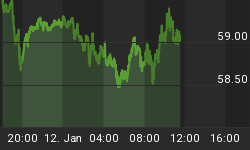
The United States, Greece, France, Japan, and most other countries spend much more than they collect in revenue as calculated on a cash basis without accounting for the much larger unfunded liabilities promised to Social Security, Medicare, and Pension recipients. This means the official national debt increases rapidly - by about 12% per year for the last five years in the United States. Revenues are flat or slowly increasing, and debt is rapidly increasing! Congress acts as if this can continue forever. What could go wrong?
The government borrows more money each year to fund the excess of spending over revenue. Because the borrowing need is so large, the Federal Reserve "prints" (monetizes the debt) money each month to buy most of the bonds (debt) of the government. If the Fed did not print money to purchase that debt, interest rates would be much higher. Eventually the bond holders will assess the risk of dollar devaluation as larger than the safety and yield from those bonds. The result will be that bond holders will sell bonds (causing interest rates to rise) and/or will demand higher interest rates to compensate for the devaluation risk.
Either way, interest rates must eventually rise from their current "all-time" lows. Higher interest rates on $16,000,000,000,000 of debt will substantially increase the annual interest costs, the deficit, and the required borrowing/printing. More deficits, more borrowing, more printing, and higher interest rates will cause a larger deficit and more borrowing and the cycle will repeat. What could go wrong?
The money printing (injecting liquidity into the financial system) produces consumer price inflation. The official inflation numbers are benign, but look at the price increases for crude oil, gasoline, soybeans, wheat, corn, gold, and silver in the past decade. Consider grocery prices, medical costs, gasoline, and educational expenses and think about your actual cost of living. Has it increased substantially in the last decade? If the money printing accelerates (it must) in the next four years, how much higher will your cost of living be in four years? Will salary increases match the increases in cost of living? When you experience much higher costs and minimal salary increases, what could go wrong?
It will not work out well for most individuals whose income and net worth are NOT in the top 5% of the nation.
What can you do?
-
Reduce your living expenses and credit card debt. I understand this is difficult, but it will be easier today than next year. Make a plan and execute the plan.
-
Invest disposable income and savings in gold, silver, land, diamonds, or anything that will preserve your purchasing power as the dollar declines in value. You have choices.
-
Start now. If your funds are limited, buy a few silver Eagles each month or put whatever you can into a periodic online silver purchase plan.
-
The highest probability scenario is to assume that we will see more of the same - more deficits, more money printing, more inflation, and much higher gold and silver prices. Exponential increases in national debt correlate closely with the exponential price increases in gold and silver.
-
The price of silver is approximately $30 per ounce - expect three digit prices in several years.
-
Gold is currently below $1,700. Expect prices in excess of $3,500 per Jim Sinclair. My next two targets are $2,660 and $4,300, with higher targets thereafter. Read $4,000 Gold.
-
Expect accelerating changes in our financial world. Some of them will be painful.
-
Be careful, be safe, and preserve your purchasing power.
Don't trust me? Then listen to one of the premier financial intellects of our time - Jim Sinclair. He expects the price of gold will trade much higher than $3,500 per ounce. Read his thoughts at Jim Sinclair's MineSet.
Are higher gold prices inevitable? Of course not! Fiscal sanity could return tomorrow to our world, but the best bet is a continuation of the conditions and policies of the past five years. In that case, holding gold and silver will be rewarding, simple, and easy. Gold and silver have been a store of value for over 3,000 years. Paper money systems have all eventually failed.
You have a choice!
















